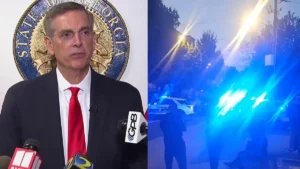NYS officials to end use of ‘emotional disturbance’ label

New York state officials have proposed on Monday to end using the term “emotional disturbance” as a designation for children who struggle with regulating their behaviors, including certain mental illnesses.
Policymakers want to replace the term with “emotional disability,” in hopes that it will reduce the stigma that may come along with “emotionally disturbed.”
The matter will go out for a 60-day public comment period before it gets a final vote from the state’s Board of Regents later this year.
If the change is finalized, New York would join 13 other states that use “emotional disability.”
Currently, New York is one of 27 states that use “emotional disturbance” or “serious emotional disturbance.”
State Education Commissioner Betty Rosa called the change “critical” because the current terminology “created the kind of labeling and internalizing for young people that really did not serve them well.”
The current terminology, advocates and families say, disparages students with behavioral differences and is applied disproportionately to Black students.
In the 2020-21 school year, Black students comprised nearly 48% of those who were labeled as emotionally disturbed, even though they make up roughly a quarter of all students. Three-quarters of students with this label were boys.
State officials first considered changing the term in January 2020, then paused as they responded to the pandemic. Currently, emotional disturbance is one of 13 designations for students with disabilities.
The definition of who qualifies as having an emotional disturbance can be broad and somewhat vague.
A student might meet the criteria, for instance, if over a long period of time they cannot create “satisfactory” relationships with students and teachers or they display “inappropriate” behaviors “under normal circumstances.”
Children with a “pervasive” mood of unhappiness or depression could be classified with the disability as can those who exhibit “physical symptoms or fears associated with personal or school problems.”
The number of children classified as emotionally disturbed dropped more than 16% last school year from 2018-2019, according to city data. The dip, however, could be the result of fewer referrals for special education services during the pandemic.
Last fall, state officials surveyed nearly 1,100 people — including special education teachers, families of students with disabilities, and related service providers — on their opinions about the term “emotional disturbance.”
Eighty-nine percent of respondents said the term carried a negative perception, according to the state.
Lori Podvesker, a policy expert at disability rights advocacy organization INCLUDEnyc, applauded the change and called it “the beginning” of a systematic change in how people think about students with various disabilities.
The term emotional disturbance “implies that a student is extremely disruptive and demonizes” them, Podvesker said.
“The cultural implications of this and the power of language and how it will help us as a system humanize people with mental health disabilities is paramount,” Podvesker said.
Podvesker pointed to how students classified as having an emotional disturbance were disproportionately placed in District 75 programs — where they learn alongside other students who have more severe disabilities — when compared to students with disabilities citywide.
She hopes that Monday’s move is one of many steps that could further integrate students with disabilities with their peers without disabilities.








